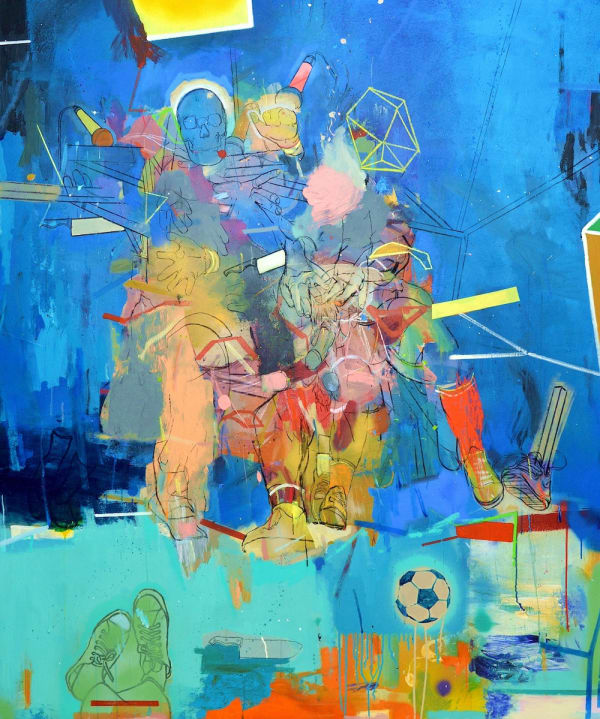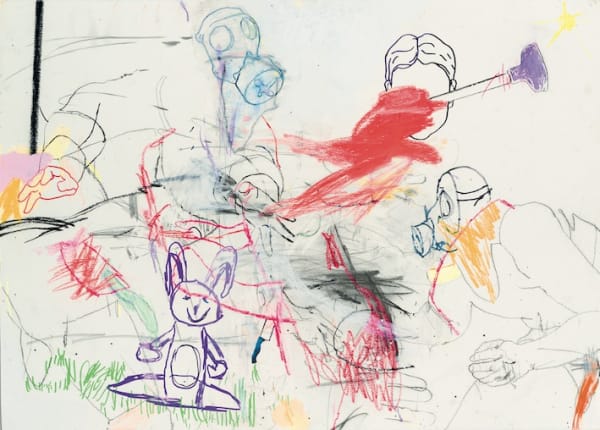For FIAC Online Viewing Rooms, Selma Feriani Gallery presents Power Structures, featuring works by Catalina Swinburn, Thameur Mejri, Massinissa Selmani whose practices examine the complexities of our existence through investigations into gender, politics and historical narratives. Working across continents, they each occupy individual yet collective concerns which they explore through materiality and technique, on display we can see their recent interactions with painting, drawing and sculpture.
Catalina Swinburn’s sensational sculptures are produced by intricately weaving together pages of historical documents to construct robust structures. Anahita refers to the Indo-Iranian cosmological figure, cherished as the divinity of the Waters and associated with fertility, healing and wisdom. The artwork is formed of archaeological documentation of Persian-Roman mosaics, taken from the palace of Shapur I at Bishapur. Most of these artefacts are now housed at the Louvre Museum in Paris and the National Museum of Iran.
Through this labour-intensive approach, the material is transformed from delicate pages of books to garment- like structures that the artist often wears as armour to perform in. The artwork is, therefore, activated by the artist’s position as both the fabricator and the performer of the sculpture, occupying a determination as she possesses multiple roles. This can be seen as a metaphor for resistance, where woven narratives are portrayed as a substitute for the silence of women throughout history.
While Thameur Mejri investigates parallels between paradoxical ideas of violence, innocence, guilt and shame. Masculinity acts as a central element throughout his compositions, the vigorous manner in which he places the figure and contemporary icons onto the canvas reflects the relationship between painting and painter, suggesting self-portraits that battle to fully emerge and reveal themselves. The energetic application of colour establishes the atmosphere in this confrontation between oppositions; heaven and hell, each represented by blue and red. In choosing these colours as a departure point and importantly for their opposing religious connotations, he confirms the major influence of these symbols, particularly across the Muslim world.
In his approach, Massinissa Selmani absorbs fragments of photographic imagery from sources such as the media, his method isolates and departs from the initial context in order to create rupture, which acts as an opportunity for the imagination to flourish. His drawings depict scenarios and explorations observed from his sketchbooks, which play an important role in the evolution of his work. Drawing becomes an extension of thought, it allows him to establish potential explanations, which become manifested in his previous drawings and those yet to come. His approach reverses the continuum of existence and disrupts the linearity of time. As such an ambiguous space is occupied by catastrophe, it is a real power of condensation of reality that is discussed in his work: between derision and gravity, oscillation allows the emergence of sedimentation.




